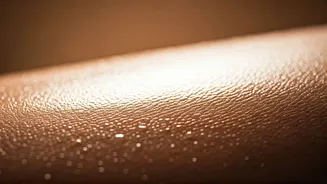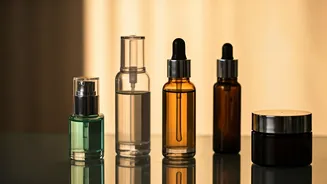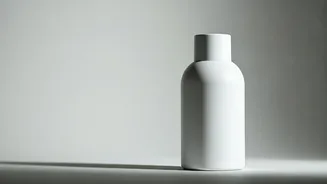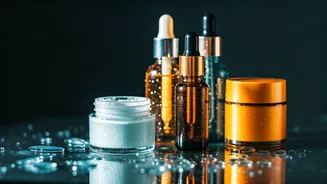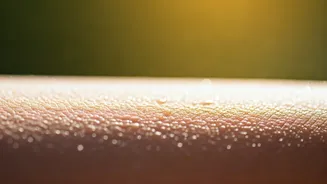Understanding Your Skin
The cornerstone of any effective skincare routine is understanding your unique skin type. Common skin types include oily, dry, combination, sensitive,
and normal. Each type has specific characteristics and requires a tailored approach. Oily skin often appears shiny and is prone to breakouts, while dry skin feels tight and can be flaky. Combination skin exhibits characteristics of both oily and dry skin, typically with an oily T-zone and drier cheeks. Sensitive skin is easily irritated, and normal skin is balanced, neither too oily nor too dry. To determine your skin type, observe how your skin feels and looks throughout the day, especially after cleansing. You can also perform the blotting paper test: gently press a clean blotting paper against different areas of your face after cleansing and observe the oil absorption to identify your skin type.
Cleansing: The Foundation
Cleansing is the first and most crucial step in any skincare regimen. It removes dirt, oil, makeup, and environmental pollutants that can clog pores and lead to breakouts or a dull complexion. Choose a cleanser specifically formulated for your skin type. For oily skin, a gel-based or foaming cleanser that effectively removes excess oil is ideal. Dry skin benefits from creamy or hydrating cleansers that won't strip away natural oils. Combination skin may require different cleansers for the T-zone and the rest of the face. Sensitive skin should use a fragrance-free, hypoallergenic cleanser. Always cleanse your face twice daily – once in the morning and once at night – using lukewarm water and gentle circular motions. Rinse thoroughly and pat your skin dry with a soft towel.
Exfoliation: Unveiling Brightness
Exfoliation is the process of removing dead skin cells from the surface of your skin, revealing a brighter, smoother complexion. There are two main types of exfoliants: physical and chemical. Physical exfoliants, like scrubs and cleansing brushes, use abrasive particles to manually remove dead skin cells. Chemical exfoliants, such as AHAs (alpha-hydroxy acids) and BHAs (beta-hydroxy acids), use acids to dissolve the bonds that hold dead skin cells together. AHAs, like glycolic and lactic acids, are water-soluble and work on the surface of the skin, while BHAs, like salicylic acid, are oil-soluble and penetrate deeper into the pores. Choose an exfoliant that suits your skin type and sensitivity. Over-exfoliation can lead to irritation and dryness, so start slowly and gradually increase the frequency as tolerated. Typically, exfoliating 1-3 times a week is sufficient.
Hydration: Keeping Skin Moist
Hydration is essential for maintaining healthy, plump, and radiant skin. Even oily skin needs hydration, although the type of moisturizer may differ. Choose a moisturizer formulated for your skin type. Dry skin benefits from rich, emollient creams that provide intense hydration. Oily skin should opt for lightweight, oil-free moisturizers. Combination skin can use different moisturizers for different areas of the face or a single, balanced moisturizer. Sensitive skin requires gentle, fragrance-free moisturizers. Apply moisturizer twice daily, after cleansing and before applying sunscreen. Look for ingredients like hyaluronic acid, glycerin, and ceramides, which help attract and retain moisture in the skin.
Sun Protection: Shielding Your Skin
Sunscreen is arguably the most critical step in any skincare routine, protecting your skin from the damaging effects of the sun's ultraviolet (UV) rays. UV exposure is the primary cause of premature aging, including wrinkles, fine lines, and age spots. It also increases the risk of skin cancer. Choose a broad-spectrum sunscreen with an SPF of 30 or higher. Apply sunscreen liberally to all exposed skin at least 15 minutes before sun exposure, and reapply every two hours, or more frequently if swimming or sweating. Sunscreen should be used daily, regardless of the weather, as UV rays can penetrate clouds. Consider using sun-protective clothing, hats, and sunglasses to further protect your skin from sun damage.
Serums: Boosting Your Routine
Serums are concentrated skincare products that deliver targeted ingredients to address specific skin concerns. They typically contain a high concentration of active ingredients and have a lightweight texture that allows them to penetrate the skin more effectively. There is a serum for almost every skin concern, from fine lines to acne. Vitamin C serums are powerful antioxidants that protect against free radical damage and brighten the skin. Hyaluronic acid serums provide intense hydration. Retinol serums help reduce fine lines, wrinkles, and acne. Niacinamide serums can help with pore size, redness, and inflammation. Apply serums after cleansing and before moisturizing, following the product's instructions. Introduce serums gradually to avoid irritation and allow your skin to adjust.
Lifestyle: Internal Radiance
Your lifestyle significantly impacts your skin's health and appearance. A balanced diet rich in fruits, vegetables, and antioxidants provides essential nutrients that support skin health from within. Stay hydrated by drinking plenty of water, as dehydration can lead to dry and dull skin. Adequate sleep is crucial for skin repair and regeneration; aim for 7-8 hours of quality sleep each night. Manage stress through relaxation techniques like yoga or meditation, as stress can contribute to skin problems. Avoid smoking, as it damages collagen and elastin, leading to premature aging. Limit alcohol consumption, as it can dehydrate the skin and cause inflammation. Regular exercise improves blood circulation, which helps deliver nutrients and oxygen to skin cells, promoting a healthy glow.
Consistency: Key to Success
Consistency is key to achieving and maintaining healthy, radiant skin. Following a consistent skincare routine allows your skin to adapt to the products and ingredients, resulting in visible improvements over time. It may take several weeks or even months to see noticeable results. Be patient and persistent with your routine. Avoid switching products frequently, as this can disrupt your skin's balance and lead to irritation. Keep a skincare journal to track your progress and identify any products or ingredients that may be causing problems. Remember, achieving healthy skin is a journey, not a destination, so stay committed to your routine and enjoy the process.
